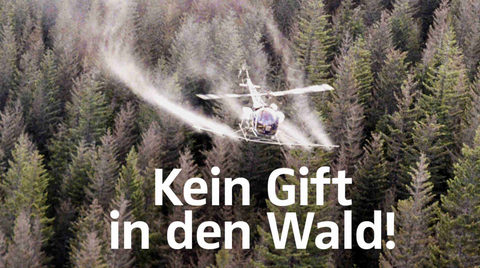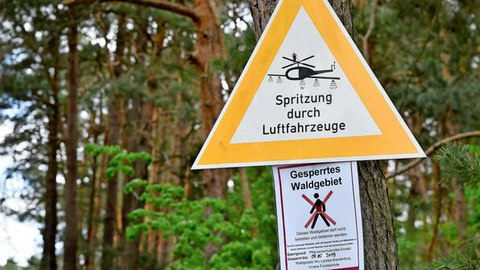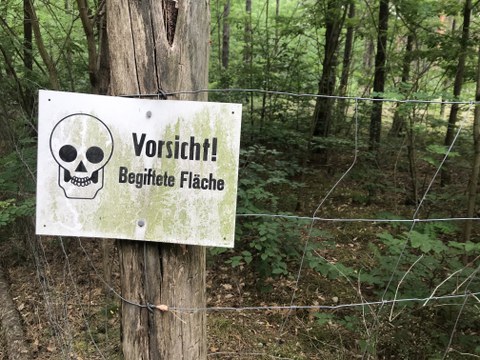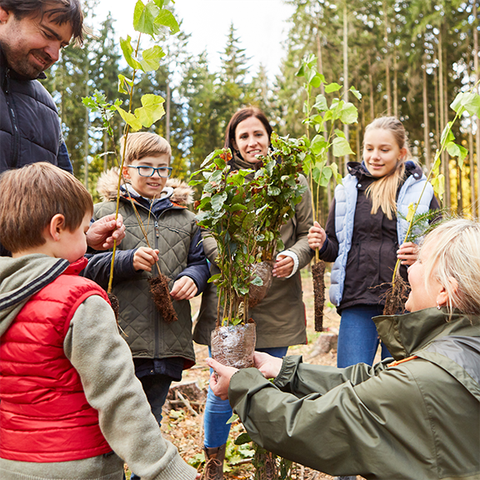Overreaction or justified concern - how does the forestry industry deal with criticism?
Different perspectives on the same goal
When it comes to plant protection in forests, there are often two opposing camps that pursue the same goal but prefer different approaches. On the one hand, nature conservation organizations advocate leaving more self-regulation to nature. They rely on natural enemies of insect pests, long-term forest conversion and patience. On the other hand, forestry experts point out that in times of climate change, unstable monocultures and massive pest pressure, these strategies are not always sufficient to preserve stands. Although both sides want to protect the forest, the different approaches quickly lead to conflicts. These tensions are exacerbated by emotional ties to the "forest on our doorstep", mistrust of the authorities, media exaggeration and a lack of specialist knowledge among parts of the population.
The actual acceptance problem
The RiKA analyses show that the acceptance crisis in the forestry sector is not solely due to the measure itself, but above all to the way in which it is communicated.
Citizens often only find out about planned plant protection measures at a late stage or by chance. Official announcements are more likely to reach experts than the general public or directly affected residents. Without early and clear classification, people's concerns about possible risks predominate, while the benefits are hardly recognizable. In this phase, other stakeholders - such as nature conservation organizations or citizens' initiatives - occupy the topic at an early stage and set their own interpretations. These narratives are difficult to correct later, as the initial perception is often particularly influential.
When inaction also has consequences
In the public debate, the risks of inaction are often underestimated. Failure to intervene can lead to the loss of entire old stands. This not only results in the loss of habitats for numerous species, but also important ecosystem services such as CO₂ sequestration, drinking water protection and soil conservation. Forest conversion can slow down significantly because young trees without a protective canopy are more susceptible to frost, heat and drought. Economic consequences are also possible if large-scale calamities put a strain on the timber market and disrupt regional value chains. These long-term disadvantages are difficult to convey in short, catchy messages and are therefore often overlooked in the public debate.
Communication as an integral part of the forest protection strategy
In order to gain the trust of the public, communication must not only be reactive during a crisis, but must be an integral part of the forest protection strategy. This means opening a dialog before a decision on measures is made, making the decision-making process transparent and explaining which alternatives have been examined. It is equally important to openly name possible side effects in order to create credibility. Communicating a clear target image - for example, what the forest should look like in the coming decades - helps to make the connection between current measures and long-term benefits visible. Fixed, personally known contact persons on site can play an important role here because they not only answer questions, but also create a basis of trust.
The challenge of dialog at eye level
The dialog between forestry and the public is made more difficult by the fact that many foresters have not chosen their profession in order to regularly speak in front of an audience or hold public debates. Communication skills have hardly been anchored in forestry training to date. As a result, although discussions are technically correct, they are often difficult for laypeople to understand, emotional objections are not addressed and other stakeholders act faster, more emotionally and more skillfully in the media. The RiKA project therefore recommends in a targeted manner training, more staff for public relations and the use of a variety of formats such as moderated forest walks, information evenings, explanatory videos or interactive online platforms.
Trust as the key to success
Ultimately, trust in the people and institutions involved determines whether a measure is accepted. This trust arises when the public can understand why a measure is necessary, which risks have been taken into account, which alternatives have been examined and why they were not chosen. It is equally important to understand what long-term contribution the measure will make to the conservation and development of the forest. Continuous, transparent and comprehensible communication - even in times without acute crises - can turn a conflict between "overreaction" and "justified concern" into a joint design process in which forest protection becomes a shared responsibility.




